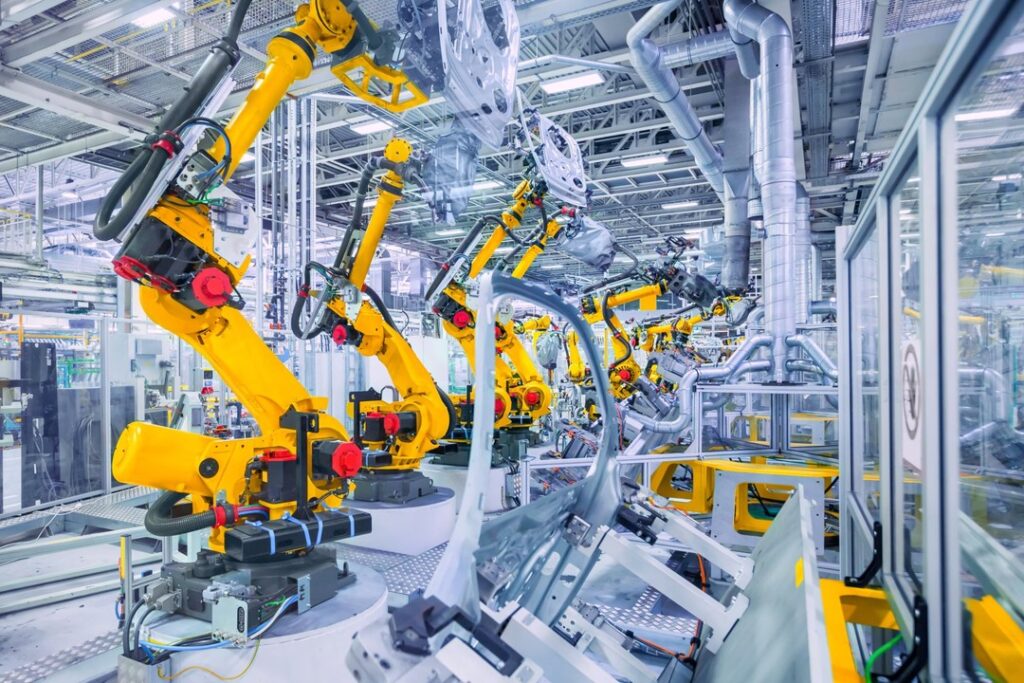Introduction to Cloud Computing in Industrial Automation

Cloud computing has emerged as a transformative technology across various sectors, and industrial automation is no exception. At its core, cloud computing refers to the delivery of computing services, such as storage, processing power, and software, over the internet. Unlike traditional computing methods, which rely on local servers and personal hardware, cloud computing leverages remote servers hosted on the internet to store and process data. This shift allows for greater flexibility, scalability, and accessibility, making it a powerful tool for modern industries.
Industrial automation, on the other hand, involves using control systems, such as computers or robots, and information technologies to handle different processes and machinery within an industry. This automation aims to increase efficiency, reduce human intervention, and improve the overall productivity of manufacturing and production processes. The integration of cloud computing with industrial automation has the potential to significantly enhance these objectives.
In traditional setups, industrial automation systems often depend on on-premises infrastructure, which can be costly to maintain and upgrade. Cloud computing offers a solution by providing a more cost-effective and scalable alternative. Through cloud-based systems, companies can access computational resources on-demand, ensuring they only pay for what they use, and can easily scale their operations as needed.
Moreover, cloud computing facilitates improved data management and analytics. With the vast amounts of data generated by industrial automation systems, the cloud provides the necessary infrastructure to store, process, and analyze this data efficiently. This capability enables industries to gain actionable insights, optimize processes, and make data-driven decisions, ultimately leading to enhanced performance and competitiveness.
As we delve deeper into the intersection of cloud computing and industrial automation, it becomes evident that this synergy is revolutionizing the way industries operate. The subsequent sections will explore the various benefits, challenges, and real-world applications of this technological convergence, highlighting its critical role in shaping the future of industrial automation.
Enhanced Data Management and Analytics
Cloud computing has revolutionized data management and analytics in the field of industrial automation. Modern industrial processes generate vast amounts of data, and cloud platforms are uniquely equipped to handle, store, and process this data efficiently. By leveraging the computational power and storage capabilities of cloud infrastructure, companies can gain real-time insights and analytics, which are essential for optimizing production workflows and improving decision-making.
One of the primary benefits of using cloud computing for data management is the ability to conduct real-time analytics. This capability allows businesses to monitor industrial processes continuously, identify inefficiencies, and make data-driven decisions promptly. Enhanced data visibility ensures that manufacturers can quickly respond to changing conditions on the production floor, ultimately leading to increased operational efficiency and reduced downtime.
Predictive maintenance is another significant advantage brought by cloud-enabled data analytics. By analyzing historical data and identifying patterns, cloud-based tools can predict when equipment is likely to fail, allowing for preventative measures to be taken before disruptions occur. This proactive approach to maintenance not only extends the lifespan of machinery but also minimizes unplanned downtime and associated costs.
Furthermore, the optimization of production workflows is greatly facilitated by cloud computing. Advanced analytics tools can process vast datasets to identify bottlenecks, optimize resource allocation, and streamline operations. For instance, machine learning algorithms can be employed to analyze production data and suggest improvements, leading to more efficient and cost-effective manufacturing processes.
Several specific tools and technologies have emerged to support these capabilities. Platforms such as Microsoft Azure and Amazon Web Services (AWS) offer comprehensive solutions for data management and analytics. These platforms provide industrial users with the necessary tools to collect, store, and analyze data at scale, ensuring they can harness the full potential of their data for enhanced operational performance.
Scalability and Flexibility
Cloud computing offers unparalleled scalability and flexibility in the realm of industrial automation. One of the primary advantages of cloud services is the ability to scale operations up or down based on real-time demand. This dynamic scaling is achieved without significant investments in physical infrastructure, thereby reducing capital expenditure and operational complexities. Traditional automation systems often require substantial hardware and software investments to accommodate growth, leading to increased costs and resource allocation challenges. In contrast, cloud-based solutions provide a more cost-effective and efficient approach.
The flexibility of cloud computing extends to seamless integration with various industrial equipment and protocols. Cloud platforms can interface with a wide range of devices, from legacy machinery to modern IoT-enabled equipment. This compatibility ensures that companies can maintain their existing systems while adopting new technologies, creating a hybrid environment that leverages the strengths of both. Furthermore, cloud-based systems support multiple communication protocols, facilitating smooth data exchange and interoperability across different platforms.
Real-world examples illustrate the tangible benefits of cloud computing in industrial automation. For instance, a manufacturing company leveraging cloud services can rapidly adjust its production capacity in response to market fluctuations. During periods of high demand, additional resources can be allocated to ensure optimal performance, while during slower periods, resources can be scaled back to minimize costs. Another example is a logistics firm that uses cloud-based systems to monitor and manage its fleet of vehicles. By integrating with GPS and telematics data, the company can optimize routes, reduce fuel consumption, and improve delivery times.
These examples highlight how the scalability and flexibility of cloud computing enable businesses to adapt to changing conditions and integrate diverse technologies seamlessly. The result is a more agile and responsive industrial automation environment that can meet the evolving needs of the market.
Cost Efficiency and Resource Optimization
Cloud computing has emerged as a transformative force in industrial automation, particularly notable for its cost efficiency and resource optimization benefits. One of the primary advantages lies in the significant reduction of expenses related to on-site hardware. Traditional systems often require substantial investment in physical servers, storage devices, and networking infrastructure, not to mention the ongoing costs for maintenance and upgrades. Cloud solutions, however, eliminate the need for such costly capital expenditures, as they rely on off-site data centers managed by cloud service providers.
Moreover, cloud computing offers a scalable model where businesses pay only for the resources they use. This pay-as-you-go approach, combined with the ability to quickly scale resources up or down, ensures that companies can efficiently manage their budgets and avoid over-provisioning. The elasticity of cloud services means that industrial operations can seamlessly adjust to varying workloads, optimizing resource utilization and minimizing wastage.
Resource optimization extends beyond financial savings to include energy efficiency. On-site data centers typically consume large amounts of electricity for both operation and cooling. By migrating to the cloud, industries can leverage the advanced energy-efficient technologies implemented by cloud providers. These providers often utilize state-of-the-art, green data centers that significantly reduce the carbon footprint associated with industrial operations.
Additionally, cloud computing streamlines workforce management by automating routine tasks and facilitating remote access. This not only reduces the need for on-site personnel but also enhances productivity by enabling real-time monitoring and management of industrial processes from any location. The integration of cloud-based solutions can lead to more effective deployment of human resources, allowing skilled workers to focus on more complex, value-added activities.
Numerous case studies attest to the cost savings achieved through cloud adoption in industrial settings. For example, a manufacturing company that transitioned to a cloud-based enterprise resource planning (ERP) system reported a 30% reduction in IT costs and a 20% increase in operational efficiency. Another case involved an energy sector firm that moved its data analytics to the cloud, resulting in a 25% decrease in energy consumption and a significant reduction in downtime.
In summary, the adoption of cloud computing in industrial automation offers compelling advantages in terms of cost efficiency and resource optimization. By reducing the need for expensive on-site hardware, optimizing energy consumption, and enhancing workforce productivity, cloud solutions provide a robust framework for achieving sustainable, cost-effective industrial operations.

